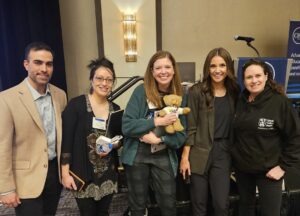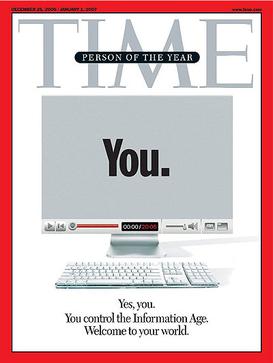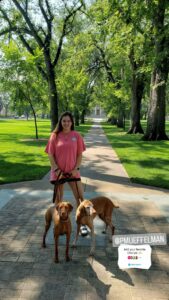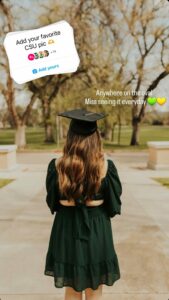
Last month, the #CSUSocial team attended and presented at the CASE (Council for Advancement and Support of Education) Social Media and Community conference in Denver. It was three days packed with higher education social media professionals sharing their insights and best practices. While there were many insightful nuggets from the conference, I’m sharing my biggest takeaways with you all.
“We are all content creators”
A typical higher ed social media audience consists of sub-sets of diverse and sometimes disjointed audiences – alumni, students, faculty, athletics fans, etc. Add to that the pressure of creating and optimizing content for an ever-growing list of social media platforms. This can pose a huge challenge, especially for smaller social media teams. Alexa Block from Pomona College recommended empowering all team members to produce social media content. A lot of the expectation of content creation depends on your team members’ strengths, comfort-level and understanding of the platforms. A great way to bring team members on board in a shared commitment to creating social content is to show them analytics of your top-performing content and explain why you believed it was successful. Alexa also stressed the importance of communicating social media best practices with faculty, staff or other potential content creators.
At CSU, we are incredibly lucky to have Hannah as our video content creator for social. We also have a group of seasoned videographers and photographers whose work we tap into regularly, but when duty calls for someone like me with limited video and photo skills, Alexa’s resources will be at hand!
UGC and interactive content
Katy Griffin from University of Nevada, Las Vegas and Chelsea Holts from University of North Carolina, Chapel Hill defined UGC (user-generated content) as “any mechanism that encourages your audience to share content about your school and creates a path for engagement.” Their presentation featured the evolution of UGC in a timeline, starting from Time Magazine’s cover with ‘You’ as the person of the year in 2006.

They talked about how traditional UGC is being replaced by interactive storytelling. They also mentioned a significant drop in brand hashtag usage.
UGC now is not just about curating content that people have shared with your brand hashtags, but letting your audience drive the storytelling. This does come with challenges as ephemeral content has emerged as students’ preferred form of UGC – students prefer to DM or email content rather than post to feed.
One cool tip that they shared was about using platform features such as Instagram Q&As and “Add Yours” on Stories. We recently used this feature as part of our “I Love CSU Day” celebrations:

Social listening and engaging
Erica Colaianne from University of Michigan emphasized listening and learning from your community. She advocated spending time to understand your audience on each platform and to figure out what they expect from your institution.
Erica and her team spends time monitoring conversations around their brand. This includes keeping track of their institution’s subject matter experts’ research in the news and on social media, and plug the content gaps with their expertise. They used this approach to re-imagine their Michigan Minds podcast, which served as a platform to answer some burning questions from their community during the pandemic. What they noticed was mind-blowing. The audience didn’t care about the format or the delivery channel as long as their questions were being answered by experts at the university. The success of this strategy was evident from the fact that they saw over a 100% increase in their pageviews and podcast downloads over the course of a year.
My CSU colleague, Avery Martin (who was also in attendance at the CASE conference), and his team at CSU’s College of Health and Human Sciences are doing something similar with their podcast ‘Health and Human Science Matters.’
Michael Mahi from Cal State Fullerton talked about a strategy where his team created a ‘Titan Voices’ landing page that housed UGC from students and faculty during the pandemic. The purpose of the page, according to Michael, was to listen and chronicle how the CSUF community were responding to the pandemic. The cool part was that the storytelling was driven entirely by UGC that spanned multiple formats and delivery channels.
Overall, I think interactive content, social listening and community engagement emerged as the big themes of this conference. Oh, and also, LinkedIn is the new fun space, according to Lawrence Synett from CU Denver! It is a channel that has held its own when every other platform is trying to reinvent itself. LinkedIn continues to enjoy high levels of engagement, especially in the higher education domain, and #CSUSocial can attest to that.
